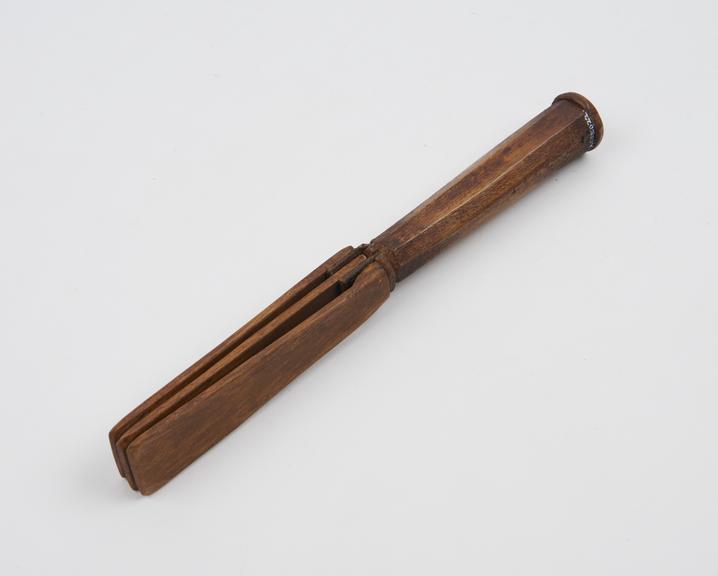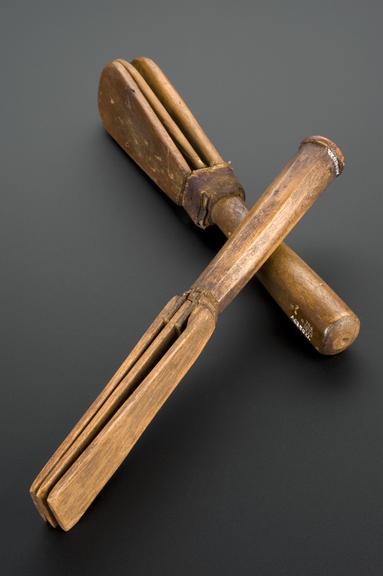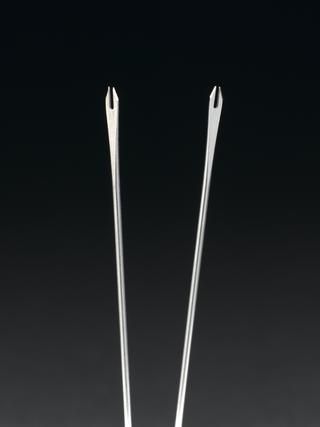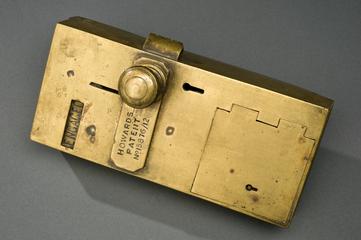
Copy of a 1600s wooden leper clapper, England
- Made:
- Unknown in England




Wooden leper clapper, English, 17th century
Those with leprosy, known as ‘lepers’, were made to wear distinctive clothing and carry a bell or a clapper to warn people of their approach. The clappers may also have been used to attract attention for donations.
Lepers were social outcasts. People were so afraid of catching the disease because of its effects. It causes lumps on the skin and attacks the nervous system. In the worst cases it can cause disfigurement to the face, hands and feet, and muscle paralysis.
This example is a copy of an original from the 1600s, which came from St Nicholas leper hospital in Kent, England. Henry Wellcome did his utmost to acquire objects for his collection. He was not always successful. Undeterred, he would seek permission to have copies made of those objects he could not acquire. It is shown here with a simliar example (A6e35021).
Details
- Category:
- Public Health & Hygiene
- Collection:
- Sir Henry Wellcome's Museum Collection
- Object Number:
- A635022
- Measurements:
-
overall: 27 mm x 251 mm x 32 mm, 0.06kg
- type:
- leper clapper




